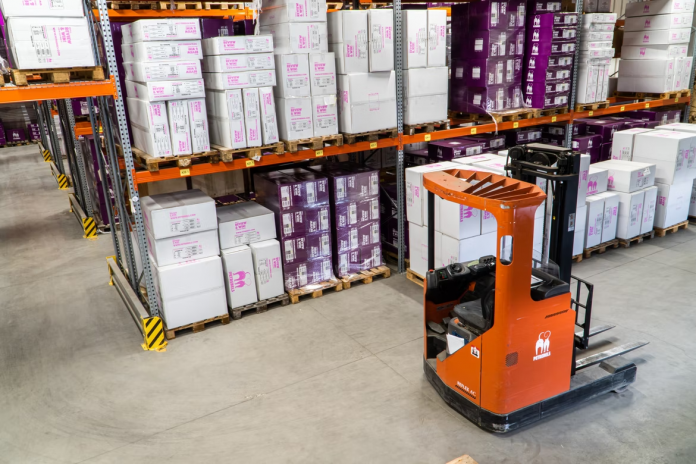Successful business owners who deal with physical products understand the critical value of well-organized logistics. That’s because keeping up with customer demand and staying ahead of the competition is virtually impossible without excellent supply chain management, particularly if your company delivers goods internationally.
Following an enormous growth spurt over the past few years, the eCommerce industry currently accounts for around 20% of global retail sales, totaling approximately $5 trillion in revenue. However, this growth presents its own set of challenges for business owners, as supply chains have become more complex to monitor and manage.
Even the most basic eCommerce stores typically rely on a wide range of suppliers and supply chain partners to ensure timely delivery from factory to warehouse and from warehouse to customer. This chain encompasses raw material production, manufacturing finished goods, storage, inventory management, order fulfillment, and last-mile delivery, all of which play an important part in maintaining a trustworthy brand on which customers can rely.
Of course, successfully managing all of these operations is not easy. However, there are a few strategies you can use to gain more control over your supply chain while saving costs and ensuring quality products are delivered to your customers.
1. Make end-to-end supply chain visibility a top priority
The capacity to follow shipments in transit, providing a clear perspective of product conditions, stock levels and movement, is referred to as supply chain visibility. Maintaining visibility into supply chain logistics helps eCommerce owners improve customer service and cost controls by managing goods no matter where they’re located, providing real-time status updates, reducing interruptions, and mitigating risk.
Achieving true end-to-end visibility means your supply chain will become more robust, agile, and dependable, even amid periods of disruption. Sellers can accomplish this in a number of ways, often involving the deployment of condition monitoring and IoT data logging solutions.
Once this data has been collected, it must be analyzed to derive insights on both upstream and downstream visibility. In turn, this will give you a clearer understanding of how all the parts necessary to make your product are moving through the supply chain. It also allows you to keep your customers updated regarding the availability of products and manage their expectations regarding expected arrival timing.
2. Utilize warehouse space more efficiently
As competition in the eCommerce space heats up, the cost per square foot of warehouse space rises in tandem. In fact, warehouse space is priced 25% higher today than it was five years ago, according to the Wall Street Journal.
Furthermore, warehousing typically takes up 4% to 6% of a company’s overall logistics costs, far outweighing labor expenses. As a result, eCommerce store owners should look to reduce costs and improve efficiency across their warehousing operations. They can improve it by implementing an automated storage retrieval system or another form of automation.
Some strategies to achieve this include:
- Make the most out of vertical space
- Consolidate all shipments of the same item in one location
- Consider installing a mezzanine above a floor-level process
3. Invest in automated data solutions
As previously stated, data is critical for establishing end-to-end supply chain visibility. However, if your data sources are fragmented, delayed, or inaccurate, you’re essentially flying blind through a sky full of obstacles.
As a result, you must invest in an automated data integration tool that collects data from all relevant sources and feeds it into a single data repository, resulting in a single source of truth that is constantly updated without the need for time-consuming, error-prone manual data entry or data transfer.
You probably have access to data relating to customer transactions, supplier orders, web traffic, shipping vendor package statuses and more, but keeping all of this information in distinct data silos is a big mistake. It’s only by consolidating all of these signals that you can gain a holistic picture.
4. Negotiate a better deal on outbound shipping costs
With Amazon being able to ship products to 72% of the US population in just one day, eCommerce stores are under intense pressure to increase their shipping speeds in order to meet consumer demand. However, since outbound shipping costs account for a large percentage of total logistics costs, business owners must strike a balance between delivery speed and cost savings.
In light of this, it may be worthwhile attempting to renegotiate a better deal with your outbound shipping costs if you offer your loyalty to one provider who may be open to offering a discount based on increased volume.
Another strategy could be to utilize fulfillment centers closer to your main areas of demand. Not only will this decrease the shipping distance (and reduce costs), but it will also ensure a better customer experience when it comes to delivery times and returns.
5. Reinvest in inbound supply chain efficiency
In general, it’s easiest to maximize visibility over the downstream elements of your supply chain, which is helpful since this allows you to exert more control over how your products are delivered to the end consumer. However, to take your supply chain to the next level, you must begin to prioritize the efficiency of your inbound (upstream) logistics, effectively minimizing disruptions and keeping products in stock as needed for orders.
The ideal product vendor will provide low prices, high quality, and rapid turnaround times, but it is difficult to locate a source that provides all three of these features simultaneously. As a result, before you can identify suppliers who fit your requirements, you must first establish which attribute is most important to your specific situation.
Remember that if you want to improve your inbound efficiency, you must choose suppliers with a strong reputation for customer service, packaging, and communication as well. Furthermore, if your existing providers don’t effectively meet your demands, it may be time to change course and look for a more dependable vendor.
Conclusion
With the eCommerce industry expanding year over year, store owners must protect the integrity of their supply chain so they can deal with what seems like an inevitable increase in demand into the future. Furthermore, the global pandemic demonstrated just how fragile global supply chains could be, making true end-to-end supply chain visibility essential for those who want to overcome disruptions and carry on serving customers despite the circumstances. The need for individuals with knowledge and abilities that go above and beyond the basic duties of warehouse workers has grown, thus it’s critical to have a detailed warehouse associate job description in order to find appropriate candidates.




















![TamilMV Proxy List Top 30+ [Unblock TamilMV Sites] TamilMV Proxy Unblock](https://technewsgather.com/wp-content/uploads/2023/04/17825836_SL-121019-25870-14-1-100x70.jpg)